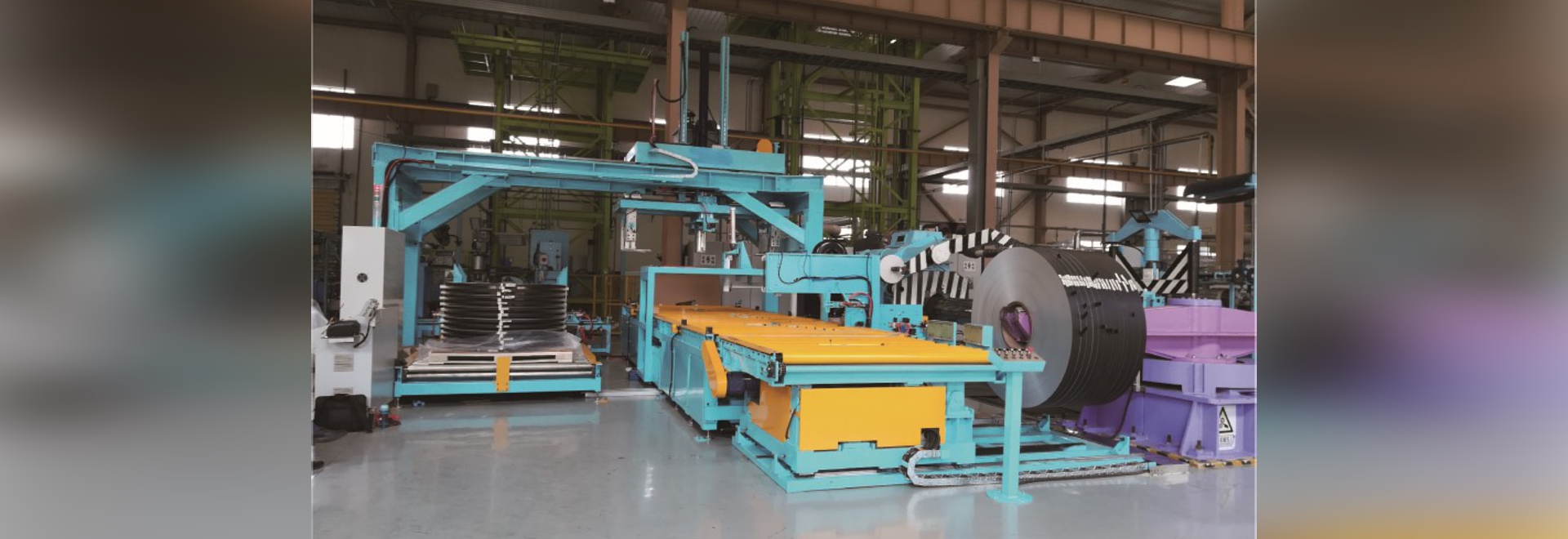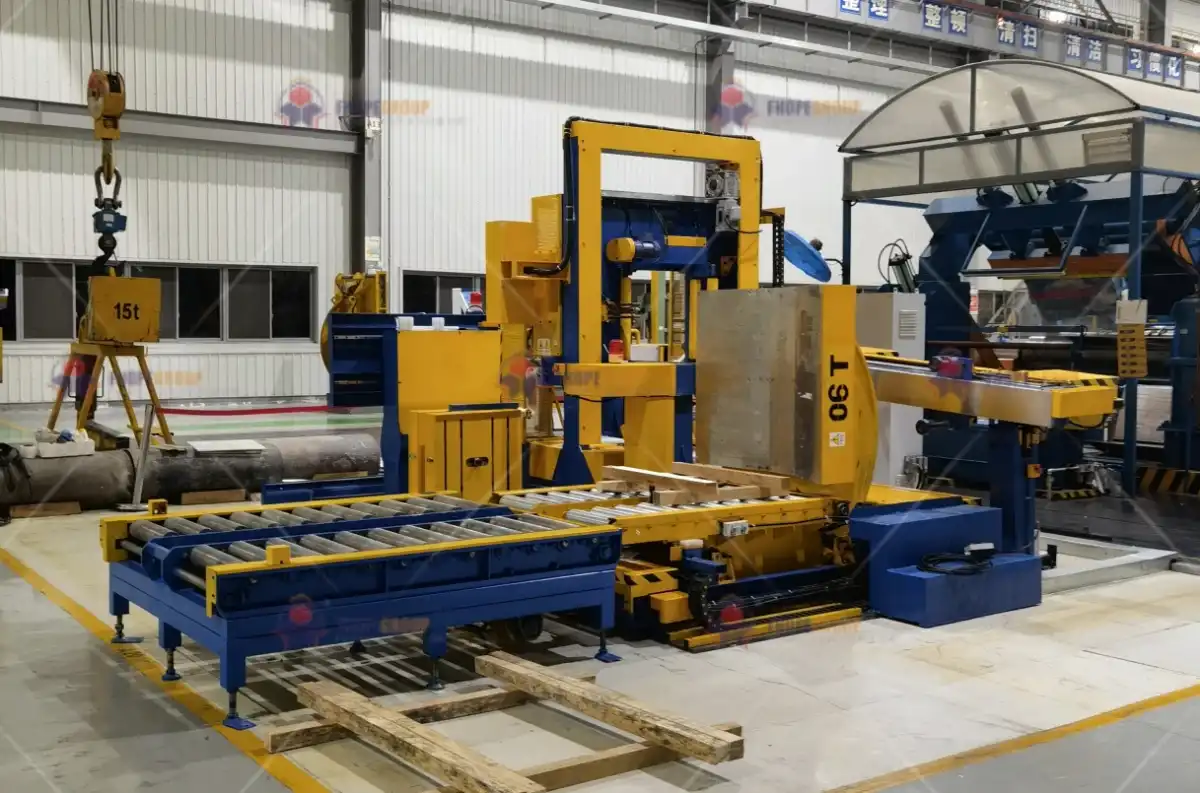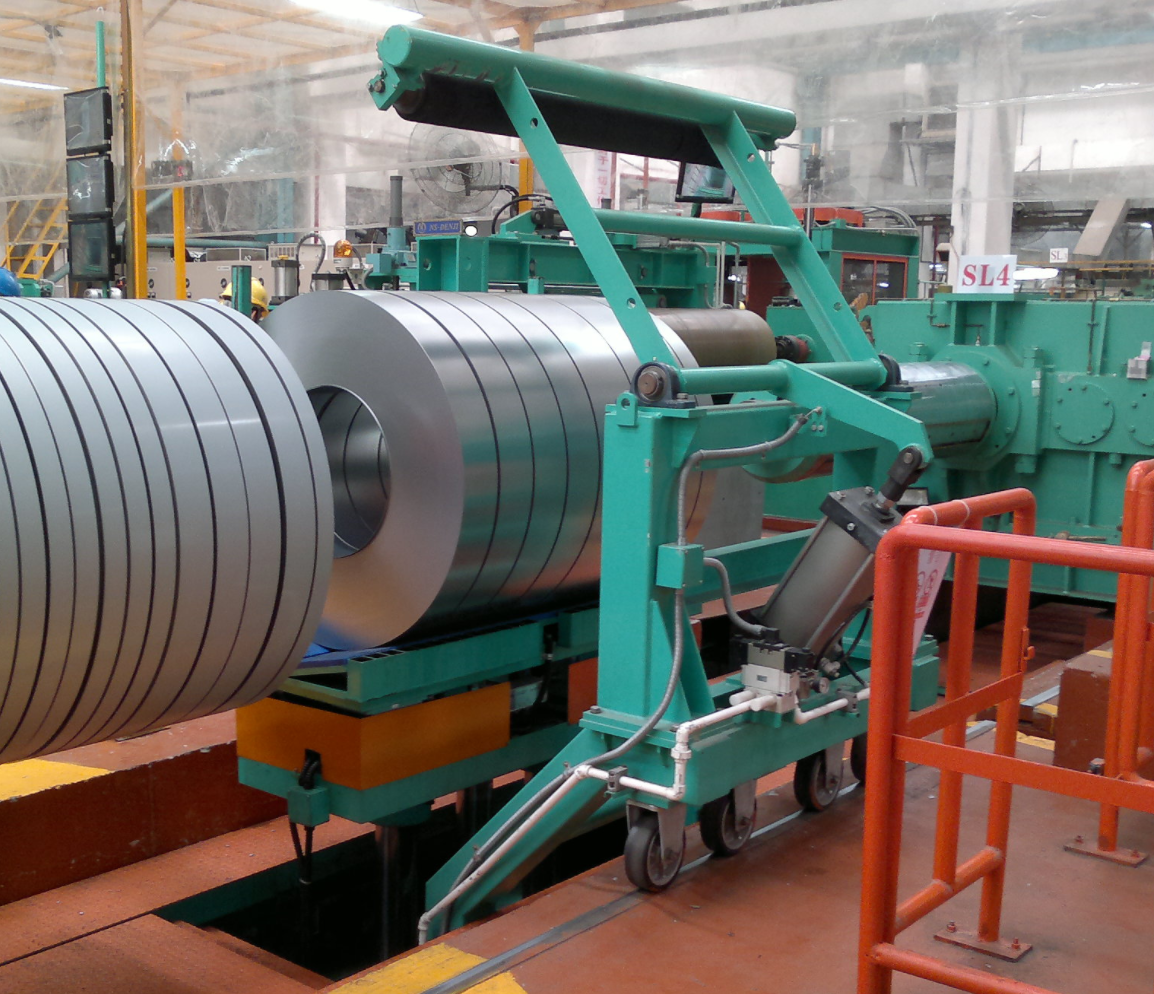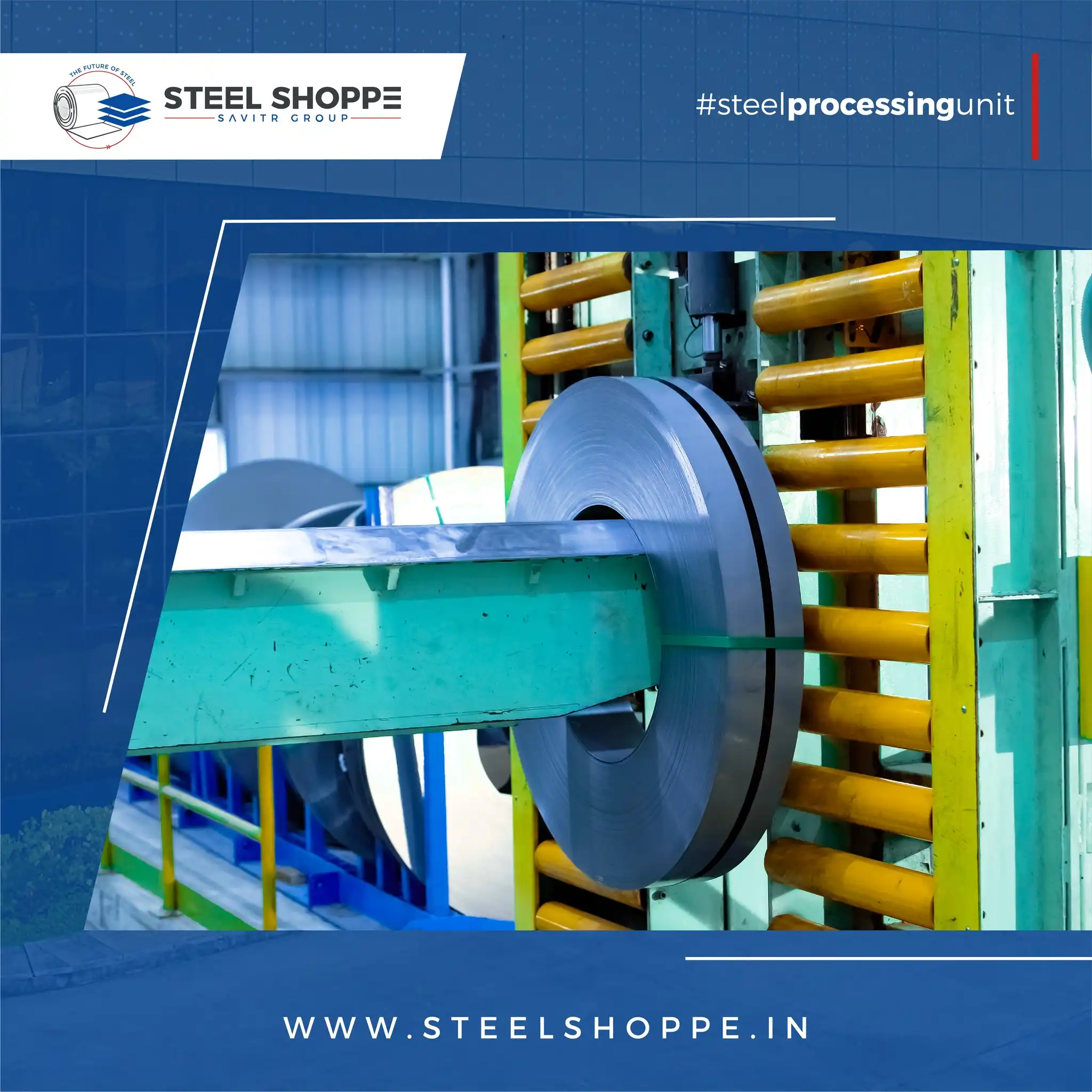Are you tired of inefficient and labor-intensive coil packaging processes? Imagine a streamlined system that not only enhances productivity but also ensures the utmost protection for your valuable steel coils. A coil packing line is the answer, revolutionizing how steel manufacturers handle and prepare their products for the market.
A coil packing line is an automated system designed to efficiently and effectively package steel coils for storage, transportation, and sale. It integrates various machines like conveyors, wrapping machines, strapping machines, and stacking systems to streamline the entire packaging process from coil handling to final palletizing, significantly reducing manual labor and improving throughput.
This comprehensive guide will delve into the intricacies of coil packing lines, exploring their components, benefits, and how they are transforming the steel industry. Continue reading to discover how automating your steel coil packaging can revolutionize your operations.
Decoding the Core Components of a Steel Coil Packing Line
Frustrated with bottlenecks in your coil production line? Imagine seamlessly transitioning from slitting to shipping, with each coil perfectly packaged and ready for dispatch. A steel coil packing line is more than just machinery; it’s a symphony of automation designed to optimize your entire workflow.
A steel coil packing line comprises several key components working in harmony to automate steel coil packaging. These typically include infeed conveyors, coil upenders, wrapping stations, strapping units, stacking mechanisms, and outfeed systems, all orchestrated by a central control system. This integration ensures consistent, high-quality packaging while significantly reducing manual intervention and boosting operational speed.

But how do these components function together to create such efficiency? Let’s dive deeper into the mechanics and explore the intricate dance of automation within a coil packing line.
A Closer Look at the Mechanics: Component Breakdown
To truly appreciate the efficiency of a steel coil packing line[^1], it’s crucial to understand the role of each component. These systems are not just a collection of machines; they are intelligently integrated units designed for specific tasks within the packaging process. Here’s a detailed breakdown:
1. Infeed and Conveyor Systems: The Entry Point
The journey begins with the infeed system[^2], often a series of robust conveyors. These conveyors are designed to handle the heavy weight of steel coils, seamlessly transporting them from the production line to the packing line. Different types of conveyors might be used, including:
- Roller Conveyors: Ideal for heavy coils, allowing for smooth and stable movement.
- Chain Conveyors: Used for precise positioning and controlled movement, especially when integration with other machinery is required.
- Belt Conveyors: Suitable for lighter coils and for transitioning coils between different stations.
2. Coil Upender/Downender: Orientation is Key
Steel coils often need to be reoriented for different packaging stages. Upenders and downenders are crucial for safely and efficiently changing the coil’s orientation from horizontal to vertical or vice versa. This is essential for processes like eye-through wrapping or vertical stacking.
3. Wrapping Station: Protection Begins
The wrapping station is where the protective layers are applied. This often involves multiple stages to ensure comprehensive protection:
- Inner Wrap: Typically uses moisture-barrier materials like VCI paper or film to prevent corrosion.
- Outer Wrap: Provides mechanical protection against damage during handling and transit, often using stretch film, reinforced paper, or even steel sheets for heavy-duty applications.
- Through-Eye Wrapping (TEW): An advanced technique where wrapping material is passed through the coil’s eye, creating a tighter, more secure, and airtight package.
4. Strapping Station: Securing the Package
Strapping is vital for securing the wrapped coil and ensuring package integrity during transportation. Strapping machines apply steel or PET straps around the coil, tensioning and sealing them for maximum hold. Different strapping methods are employed:
- Radial Strapping: Straps applied around the circumference of the coil.
- Axial Strapping: Straps applied through the eye of the coil.
- Combination Strapping: Utilizing both radial and axial strapping for enhanced security.
5. Stacking System: Ready for Dispatch
The final stage involves stacking the packaged coils onto pallets for efficient storage and shipping. Stacking systems can range from simple automated stackers to robotic palletizers, depending on the required throughput and stacking patterns.
- Automated Stackers: Mechanically lift and place coils onto pallets in pre-defined patterns.
- Robotic Palletizers: Offer greater flexibility in stacking patterns and can handle more complex arrangements.
6. Control System: The Brain of the Operation
Orchestrating all these components is a sophisticated control system, typically based on Programmable Logic Controllers (PLCs). The PLC ensures seamless synchronization between all stations, monitors performance, and allows for adjustments to packaging parameters. Advanced systems may also incorporate:
- Human-Machine Interface (HMI): For operator control and monitoring.
- Remote Diagnostics: For troubleshooting and maintenance.
- Integration with MES/ERP: For data tracking and overall production management.
Data-Driven Efficiency: Quantifying the Impact
The benefits of a coil packing line are not just anecdotal; they are quantifiable. Let’s examine the data that highlights the advantages:
| Metric | Manual Packaging | Automated Coil Packing Line | Improvement |
|---|---|---|---|
| Packaging Time per Coil | 15-30 minutes | 2-5 minutes | 75-90% |
| Labor Cost per Coil | \$5-\$10 | \$0.50-\$1.50 | 70-90% |
| Material Waste | 10-20% | 2-5% | 50-75% |
| Workplace Injuries | High | Low | Significant |
| Throughput | Low | High | Substantial |
These figures clearly demonstrate the significant gains in efficiency, cost reduction, and safety that automated coil packing lines provide. The data speaks for itself – automation is not just an upgrade; it’s a transformation.
Unveiling the Multifaceted Advantages of Automatic Coil Packing
Is your bottom line being squeezed by rising labor costs and material waste? Do workplace safety concerns keep you up at night? Automatic coil packing lines offer a powerful antidote to these challenges, delivering a compelling array of benefits that extend far beyond simple packaging.
Automatic coil packing lines deliver significant advantages, including increased operational efficiency, reduced labor costs, enhanced packaging consistency, improved workplace safety, and minimized material waste. By automating repetitive and physically demanding tasks, these systems free up human resources for more strategic roles while ensuring superior coil protection and presentation.

But what are the specific ways these systems revolutionize operations? Let’s unpack the key advantages and see how they translate into tangible improvements for your business.
- Boosting Operational Efficiency and Throughput: Automated systems operate at speeds far exceeding manual capabilities. Conveyors, wrapping machines, and strapping units work in seamless synchronization, processing coils much faster and reducing cycle times dramatically. This increased throughput directly translates to higher production capacity and faster order fulfillment.
- Slashing Labor Costs: Manual coil packaging is labor-intensive, requiring multiple workers for heavy lifting, wrapping, and strapping. Automation significantly reduces the need for manual labor, often requiring only one or two operators to oversee the entire line. This reduction in workforce translates into substantial savings on wages, benefits, and training expenses.
- Elevating Packaging Consistency and Quality: Manual packaging is prone to human error, leading to inconsistencies in wrapping tightness, strap placement, and overall package quality. Automated systems, controlled by PLCs, ensure every coil is packaged to the same precise standards, resulting in consistent, high-quality packaging that enhances product presentation and protection.
- Enhancing Workplace Safety: Handling heavy steel coils manually poses significant safety risks, including strains, sprains, and more serious injuries. Automated coil packing lines minimize manual handling, significantly reducing the risk of workplace accidents and injuries. This creates a safer working environment and reduces workers’ compensation claims.
- Minimizing Material Waste and Promoting Sustainability: Manual packaging often leads to material overuse due to inconsistent application of wrapping and strapping. Automated systems are programmed to use the precise amount of material needed for each coil, minimizing waste and reducing material costs. Furthermore, many modern systems are designed to use recyclable packaging materials, contributing to sustainability goals.
By addressing these critical areas, automatic coil packing lines offer a holistic solution for steel manufacturers seeking to optimize their operations, reduce costs, and improve overall competitiveness. The benefits are clear, compelling, and directly impact the bottom line.
Tailoring Automation: Customization and Flexibility in Coil Packing Lines
Do you think "one size fits all" applies to coil packaging? Think again. Every steel manufacturer has unique needs, coil dimensions, and production volumes. The beauty of modern coil packing lines lies in their remarkable flexibility and customization options, ensuring a perfect fit for diverse operational requirements.
Coil packing lines are highly customizable, offering a range of options to tailor the system to specific business needs. Customization includes handling various coil sizes and weights, accommodating different packaging materials, integrating with existing production lines, and scaling the system to meet future growth. This flexibility ensures optimal efficiency and ROI for diverse manufacturing environments.

But what specific aspects of a coil packing line can be customized? Let’s explore the key areas of flexibility and how they cater to individual business needs.
Key Customization Parameters: Designing Your Ideal System
The true power of a coil packing line lies in its adaptability. Manufacturers can fine-tune various parameters to create a system that perfectly matches their specific operational context:
1. Coil Size and Weight Handling: No Coil Too Big or Small
Coil packing lines can be designed to handle a wide spectrum of coil dimensions and weights, from small slit coils to massive master coils. Customization options include:
- Adjustable Conveyor Width and Load Capacity: Conveyors can be tailored to accommodate the maximum coil width and weight.
- Variable Machine Dimensions: Wrapping and strapping machines are available in various sizes to handle different coil diameters and heights.
- Heavy-Duty Components: For exceptionally heavy coils, reinforced machinery and robust handling systems can be incorporated.
2. Packaging Material Flexibility: Meeting Diverse Protection Needs
Different steel types and applications require varying levels of protection. Coil packing lines offer flexibility in material selection:
- Multiple Wrapping Material Options: Systems can be configured to handle various wrapping materials, including stretch film, VCI paper, reinforced paper, woven fabric, and even steel sheets.
- Layer Configuration: The number of wrapping layers and the sequence of different materials can be customized to achieve specific protection levels.
- Edge Protection Integration: Automated edge protection applicators can be added to protect coil edges from damage.
3. Automation Level and Integration: From Basic to Fully Automated
The level of automation can be tailored to budget and throughput requirements. Options range from semi-automatic lines to fully integrated, lights-out systems:
- Modular Design: Lines can be built in modules, allowing for phased automation upgrades.
- Integration with Existing Lines: Coil packing lines can be seamlessly integrated with upstream slitting lines, rolling mills, and downstream warehouse management systems.
- Robotics Integration: Robots can be incorporated for tasks like coil handling, palletizing, and even applying complex packaging components.
4. Layout and Space Optimization: Fitting Your Factory Footprint
Factory layouts vary significantly. Coil packing lines can be designed to fit available space and optimize material flow:
- Linear Layouts: Straight-line configurations for high-throughput, continuous flow.
- U-Shaped Layouts: Space-saving designs that maximize utilization of corner spaces.
- Custom Layouts: Lines can be custom-engineered to fit unique factory floorplans and navigate existing obstacles.
5. Scalability and Future-Proofing: Growing with Your Business
Businesses evolve, and production demands fluctuate. Customizable coil packing lines offer scalability:
- Modular Expansion: Adding modules to increase capacity as production volumes grow.
- Upgradable Technology: Systems can be designed to accommodate future technology upgrades, such as IoT integration and advanced sensors.
- Flexible Software: Control systems can be adapted to changing data management and reporting needs.
By leveraging these customization options, steel manufacturers can invest in coil packing lines that are not just efficient today but are also adaptable and scalable for the future. The key is to partner with a knowledgeable supplier who can guide you through the customization process and design a solution that truly meets your unique requirements.
Investing in the Future: ROI and Long-Term Value of Coil Packing Lines
Considering a coil packing line but wondering about the return on investment? While the initial outlay might seem significant, the long-term financial and operational benefits of automation far outweigh the upfront costs. Coil packing lines are not just an expense; they are a strategic investment in efficiency, profitability, and long-term growth.
The ROI of coil packing lines is compelling, driven by significant labor cost reductions, minimized material waste, increased throughput, and improved product quality. While initial investment varies based on customization and automation level, operational savings and enhanced efficiency typically lead to a payback period of 2-3 years, making it a sound long-term investment.

Let’s break down the key factors that contribute to the strong ROI and long-term value of coil packing lines:
1. Direct Cost Savings:
- Labor Reduction: As previously discussed, automation drastically reduces labor requirements, leading to substantial wage and benefit savings. For high-volume operations, these savings can be enormous.
- Material Optimization: Precise material application minimizes waste, cutting down on packaging material expenses. Over time, these savings accumulate significantly.
- Reduced Rework and Damage Costs: Consistent, high-quality packaging minimizes product damage during handling and transit, reducing rework, scrap, and customer returns.
2. Increased Revenue and Throughput:
- Higher Production Capacity: Faster packaging speeds enable increased throughput, allowing manufacturers to fulfill more orders and boost revenue.
- Faster Order Fulfillment: Automated lines reduce lead times, improving customer satisfaction and potentially attracting new business.
- Improved Product Quality Perception: Professional, consistent packaging enhances the perceived value of the product, potentially justifying premium pricing.
3. Operational Efficiency Gains:
- Reduced Downtime: Automated systems are more reliable and require less maintenance than manual processes, minimizing downtime and maximizing uptime.
- Streamlined Workflow: Integrated lines create a smoother, more efficient workflow from production to shipping, eliminating bottlenecks and optimizing overall operations.
- Data-Driven Optimization: Advanced control systems provide valuable data on line performance, allowing for continuous process improvement and optimization.
4. Long-Term Strategic Advantages:
- Enhanced Competitiveness: Automation allows manufacturers to operate more efficiently and cost-effectively, enhancing their competitiveness in the market.
- Improved Scalability: Modular lines can be easily expanded to meet future growth, ensuring long-term adaptability.
- Future-Proofing Operations: Investing in automation positions businesses to embrace Industry 4.0 trends and remain competitive in an increasingly automated world.
Calculating Your ROI:
While the generic ROI is strong, calculating your specific ROI requires a detailed analysis of your current packaging costs, potential savings, and the investment cost of a coil packing line. Key factors to consider include:
- Current Labor Costs: Wages, benefits, overtime, and training expenses associated with manual packaging.
- Material Costs: Current spending on wrapping and strapping materials, including waste.
- Throughput Requirements: Current production volume and desired increase with automation.
- Space and Layout Constraints: Impact on installation costs and potential layout optimizations.
- Level of Automation and Customization: Complexity and features of the chosen coil packing line.
By carefully evaluating these factors and working with a reputable supplier, you can develop a clear ROI projection and make an informed decision about investing in a coil packing line. The evidence overwhelmingly suggests that for steel manufacturers seeking long-term success, automation is not just an option – it’s a strategic imperative.
Conclusion
In conclusion, a coil packing line is more than just a piece of machinery; it’s a strategic asset that revolutionizes steel coil packaging processes. By automating and streamlining operations, these systems offer a powerful combination of efficiency gains, cost reductions, safety improvements, and enhanced product quality.
For steel manufacturers striving for operational excellence and long-term competitiveness, investing in a coil packing line is a decisive step towards a more efficient and profitable future.
[1]
Explore this link to gain a comprehensive understanding of steel coil packing lines and their efficiency in packaging processes.
[2]
Learn about the infeed system’s role in packaging machinery and how it enhances operational efficiency.









